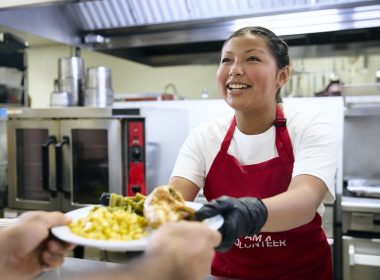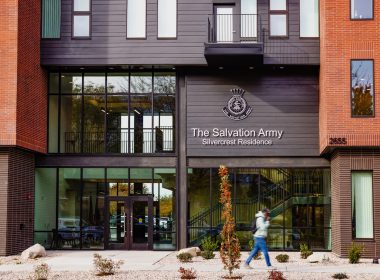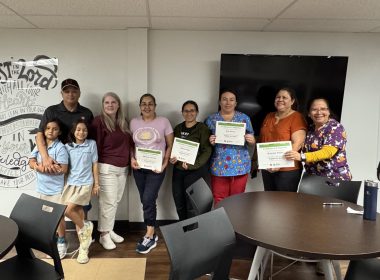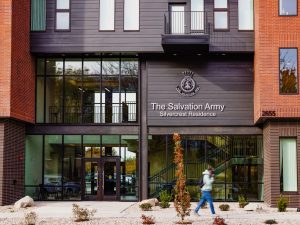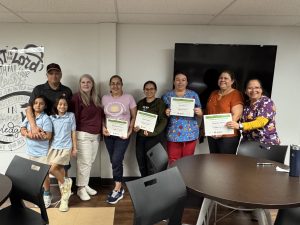In the Ramona Elementary School cafeteria in Alhambra, California, apples, bananas and unopened milk cartons often populate the share table. It’s a space where students leave unwanted items that are intact and ready to eat but have crossed the kitchen’s threshold and cannot be returned. Those who are hungry are free to take what they need.
Still, items are often left over, said Roland Jose, Alhambra Unified Assistant Director of Food and Nutrition Services.
“In general, in school food service, we probably over produce probably by 10 percent or greater, just by the way that we’re set up,” he said. “We have a large amount of meals left over at the end of shift, and it’s so disheartening to see that food not get utilized in a positive manner.”
It’s not just in Alhambra—World Wildlife Fund’s analysis found school food waste could amount to 530,000 tons per year across the U.S.
The Alhambra Unified School District wanted to repurpose the food, Jose said. That’s why they began the Food Recovery Program, and through it, partnered with a number of community groups including The Salvation Army San Gabriel Corps to put the food to good use.
About once a week, a representative from the corps picks up the food donation from Ramona Elementary in a van. The items then join other food donations from organizations, like Trader Joe’s, that are used across the corps’ programs, said Corps Officer Captain Joanna Wang.
“Having more resources, especially healthy fresh resources, is always just wonderful to have on hand for people who come, because a lot of the time we’ll have canned goods and dry goods and stuff like that,” Wang said. “So anytime we’re able to offer something fresh, something healthier, that they don’t need a microwave or an oven or anything for, it’s just a blessing.”
The items from the school’s donation are particularly helpful for the corps’ youth programs, like family night and troops, because they are kid-friendly, Wang said, adding the items are also included in emergency food boxes for those in need.
Recently, during a youth program, a 7-year-old participant received a carton of milk from the school donation. Wang said the boy is from a single-father home and has been in America for under a year.
“I’ve never seen a kid so excited to get milk,” she said. “I think it reminded him of school, but he was so, so excited to receive that…So anytime we have it, we try to make sure he gets it if he wants it.”
These efforts are part of a larger trend, especially in California, where California State Senate Bill 1383 aims to divert organic waste from landfills to reduce greenhouse gas emissions. The bill requires institutions like local schools to arrange to recover the maximum amount of excess edible food destined for landfills.
Jose currently estimates the school district is capturing 5 percent of what is utilized, with several school sites participating in the Food Recovery Program.
“There’s still room to grow,” he said, noting the district’s desire to expand. “We do produce a lot of food that does not get captured, so our goal is to try and improve that process.”
After the San Gabriel Corps began collecting the recovered food, they were invited to give a pair of presentations to some of the elementary school’s students.
“We did a presentation and shared what we do and who we are, and then they got really excited,” Wang said. “They did all these coloring items, and just made a huge project of it, and were so excited that they were able to give to someone else.”
The produce, especially, is well received by those coming to The Salvation Army for help, Wang said.
“We’re just grateful for this,” she said.”I think it’s an exciting partnership, and I’m thankful for the interaction we’ve been able to have with the people who work at the district office, as well as the staff at the elementary school and the kids.”
Do Good:

